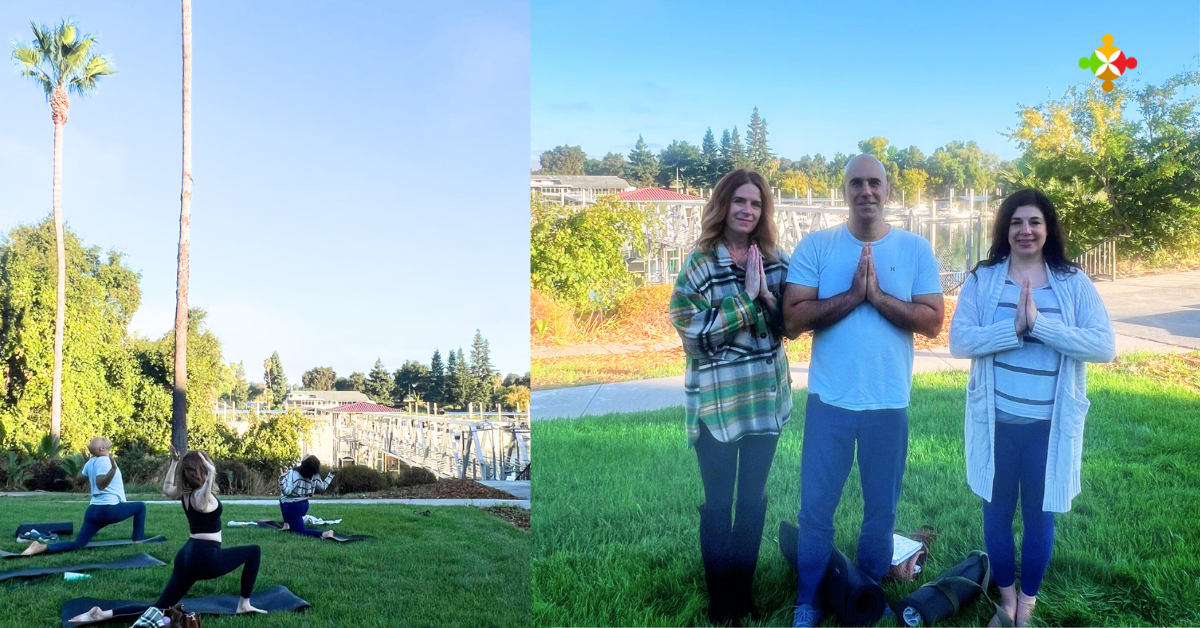
The travel industry is evolving at a rapid pace, and at the heart of this transformation is wellness tourism. As travelers become increasingly focused on health and well-being, wellness tourism is reshaping the hotel industry, making it a focal point for travelers seeking to rejuvenate their minds and bodies. Once just an afterthought or a luxury spa offering, wellness has become a major driver of hotel bookings and an integral part of resort operations.
For resorts looking to stay ahead, tapping into the wellness tourism boom can make a significant difference. And there's no better way to elevate wellness offerings than by integrating yoga retreats or yoga-based wellness activities. But the logistics of curating and managing high-quality yoga programs can be overwhelming for many hoteliers. That's where platforms like My Yoga Network come in—helping hotels and resorts connect with certified, reliable yoga instructors while ensuring a seamless experience for guests.
This blog will explore the surge in wellness tourism, its impact on the hospitality industry, and why adding yoga as part of a wellness offering is the perfect way for resorts to stay competitive.
Wellness Travel Post-Pandemic: A Lifestyle Shift with Big Impacts
The pandemic fundamentally changed how people think about their health, and those changes are reflected in how they travel. In 2020, a study by Public Health England showed that 80% of people wanted to lead a healthier lifestyle in 2021, and that desire has only intensified since then. Today, more travelers are seeking vacations that go beyond relaxation—they’re looking for experiences that promote long-term physical and mental well-being.
Wellness tourism now encompasses a broad range of activities, including yoga, meditation, fitness, nutrition, and mindfulness practices. For resorts, this represents a significant opportunity to appeal to a growing segment of health-conscious travelers. By offering curated wellness experiences, resorts not only cater to this demand but also differentiate themselves in a crowded market.
That’s where My Yoga Network can be a valuable partner. Whether you’re looking to offer week-long yoga retreats or simply add yoga sessions to daily activities, My Yoga Network connects resorts with experienced, certified yoga instructors. This ensures that guests receive consistent, high-quality experiences that align with their wellness goals, without placing the logistical burden on hotel staff.
What is Wellness Tourism?
Wellness tourism is no longer about just checking into a hotel spa for a massage or facial. It’s about offering comprehensive, immersive experiences that help travelers reconnect with themselves on a deeper level. This means integrating activities like yoga, nature hikes, detox programs, and even sleep retreats into the hotel experience. It also means paying attention to mental wellness, as more travelers seek opportunities for mindfulness, meditation, and emotional healing.
The key to success in wellness tourism is variety. Different guests seek different types of wellness, and resorts must be adaptable. For example, some guests may want active wellness, such as yoga or fitness classes, while others may prefer passive relaxation, like spa treatments or meditation sessions.
By working with a platform like My Yoga Network, resorts can easily diversify their wellness offerings. From beginner yoga classes to advanced yoga therapy sessions, MYN helps create customized yoga for hotels and resorts programs that cater to the unique needs of every guest.
Reasons Travelers Are Opting for Wellness Tourism
1. Stress Management and Mental Health: Modern travelers are increasingly looking to disconnect from the stress of daily life. Wellness tourism provides an escape where they can focus on mindfulness, mental health, and relaxation. Spa treatments, meditation classes, and nature-based retreats have become popular components of this experience.
2. Holistic Well-Being: Travelers today are not just looking for physical relaxation but are also interested in achieving mental, emotional, and spiritual well-being. This holistic approach encourages them to engage in practices like yoga, meditation, and sound therapy, making wellness resorts a preferred choice.
3. Prevention and Self-Care: With the rising cost of healthcare and growing awareness of preventative health measures, travelers are investing in wellness tourism as a proactive way to improve their health and well-being. It’s a way to indulge in self-care while potentially preventing future health issues.
Sustainable and Nature-Based Travel: Many wellness resorts are located in natural settings, offering eco-friendly and sustainable experiences that appeal to environmentally conscious travelers. From mountain retreats to coastal resorts, these destinations allow visitors to reconnect with nature while enjoying wellness activities.
Impact of Wellness Tourism on the Hotel Industry
1. Increased Demand for Wellness Resorts: The rise of wellness tourism has led to a sharp increase in demand for wellness resorts. Hotels that once focused on traditional amenities are now incorporating wellness into their offerings to meet the expectations of a new type of traveler.
2. The Integration of Wellness Services: Hotels are increasingly adopting wellness concepts by offering spa services, fitness programs, and wellness retreats. Some have even partnered with holistic health experts, yoga instructors, and nutritionists to create curated experiences for guests. This shift has transformed hotels from simple places of accommodation to full-service wellness destinations.
3. Rise of Wellness-Focused Hotel Brands: Several hotel chains have launched wellness-focused brands to tap into this growing market. For instance, Marriott International’s ‘Westin Hotels & Resorts’ brand emphasizes wellness, offering programs such as guided meditation, nutritious dining options, and personalized fitness routines.
4. Revenue Generation Opportunities: Offering wellness experiences has opened new revenue streams for hotels. In addition to room rates, hotels can charge premium prices for wellness packages, spa treatments, fitness classes, and nutrition consultations, allowing them to capture a greater share of traveler spending.
5. Extended Stays and Repeat Business: Wellness tourists are often willing to spend more on extended stays. Since these travelers view wellness trips as an investment in their health, they are inclined to return for repeat visits, ensuring long-term customer loyalty.
The Growing Demand for Yoga in Wellness Tourism
Among all the wellness activities, yoga has emerged as one of the most sought-after experiences for travelers. Its focus on both physical and mental health makes it an ideal complement to the broader goals of wellness tourism. Whether it’s through sunrise yoga on the beach, mindfulness yoga in a serene forest setting, or in-room virtual yoga sessions, travelers are increasingly looking for yoga options when choosing their holiday destinations.
Yoga helps guests de-stress, improve flexibility, and cultivate mindfulness—all while deepening their connection to the surrounding environment. Resorts that invest in yoga programming stand to gain a competitive edge, as this simple yet profound practice resonates with a wide range of travelers. However, maintaining a consistent and high-quality yoga offering at hotel or resort can be challenging without the right resources.
With My Yoga Network, resorts can gain access to a network of certified yoga instructors, who not only bring expertise but also an understanding of how to tailor sessions to different skill levels. The platform manages the logistics, ensuring that guests receive a seamless and enriching experience, whether they’re seasoned yogis or complete beginners.
How to Incorporate Yoga at Your Hotel or Resort

1. Dedicated Yoga Spaces: Whether it’s a serene rooftop space, a garden area, or an indoor studio, having a tranquil space for yoga allows guests to connect with their bodies and minds in a peaceful environment.
2. Certified Yoga Instructors: Partner with platforms like My Yoga Network to offer classes that cater to all skill levels. From beginner sessions to advanced flows, having a range of yoga classes ensures that every guest, regardless of their yoga background, can participate.
3. Yoga Retreats and Packages: Hotels or resorts can capitalize on the wellness trend by offering yoga retreats or wellness packages. These packages can include multiple yoga sessions, meditation classes, and spa treatments, giving guests a holistic wellness experience over the course of their stay.
4. In-Room Yoga Options: For hotels that may not have the space for dedicated yoga rooms, offering in-room yoga kits (including mats, blocks, and streaming access to yoga classes) provides a flexible option for guests who want to practice privately.
5. Yoga Events and Retreats: Hosting yoga retreats or special wellness weekends can attract wellness-focused travelers. These events can combine yoga with other wellness services such as nutrition workshops, spa treatments, or mindfulness sessions.
The Benefits of Adding Yoga to Your Property

1. Increased Occupancy Rates and Guest Loyalty
As wellness tourism continues to grow, offering yoga classes or retreats can help hotels and resorts increase their occupancy rates. Wellness tourists often seek out properties that offer holistic experiences, and by adding yoga to your property’s services, you can appeal to this growing segment of travelers. Additionally, guests who experience the rejuvenating benefits of yoga at your hotel are more likely to return for repeat visits, ensuring long-term guest loyalty.
2. Boosting Revenue with Wellness Packages
Wellness services, including yoga, offer hotels the opportunity to generate additional revenue. By creating wellness packages that combine yoga classes with other services like spa treatments or healthy dining options, hotels can offer premium experiences that come with a higher price point. Guests are often willing to invest in these comprehensive wellness packages, viewing them as an investment in their health and well-being.
3. Strengthening Your Hotel’s Brand
Offering yoga at your hotel strengthens your brand by aligning it with the global wellness movement. It positions your property as a destination for relaxation, rejuvenation, and holistic well-being. This branding not only appeals to wellness tourists but also to corporate groups looking for retreat venues or travelers who prioritize self-care.
4. Attract High-Spending Guests
Wellness travelers aren’t just health-conscious; they also tend to be high-spending guests. By expanding their wellness offerings, hotels can tap into this lucrative market. Yoga retreats, for instance, tend to attract guests who are willing to pay premium rates for longer stays and personalized experiences.
The Role of Technology in Wellness Travel: From Data to Deep Relaxation
Technology is transforming wellness tourism in ways that were unimaginable just a decade ago. Today, guests arrive with wearable devices that track their sleep, heart rate, and physical activity, expecting hotels to provide personalized experiences based on their health data. Resorts are incorporating this technology into their wellness programs, offering guests data-driven experiences that help them improve their overall well-being.
For example, some hotels offer sleep-enhancing programs that include smart beds, blackout curtains, and guided meditation apps. Others are using technology to track fitness goals, allowing guests to set health milestones during their stay. This tech-driven approach to wellness can also be applied to yoga. With MYN, resorts can integrate virtual or on-demand yoga classes, allowing guests to practice at their convenience, whether in their rooms or outdoor yoga decks.
By leveraging technology alongside human expertise, resorts can offer personalized wellness experiences that leave a lasting impact on guests.
Wellness Tourism and Sustainability: A Natural Partnership
Many wellness travelers are also deeply committed to sustainability, and they seek out destinations that align with their values. This has given rise to eco-friendly wellness retreats that emphasize a connection to nature, sustainable practices, and organic, locally sourced food. For hotels, aligning wellness tourism with sustainability is not only good for the planet, but also for business.
Yoga, in particular, is a natural fit for sustainability-focused resorts. Practicing yoga outdoors—on the beach, in a garden, or atop a mountain—allows guests to connect deeply with the natural world while minimizing environmental impact. Additionally, yoga is a low-footprint activity, requiring minimal equipment and no electricity. By offering yoga programs through My Yoga Network, resorts can ensure that their wellness offerings are not only high quality but also in line with sustainable principles.
Conclusion: The Future of Wellness Tourism in the Hotel Industry
The rise of wellness tourism represents a significant shift in the way people travel, and hotels that embrace this trend stand to benefit greatly. By offering yoga and other wellness programs, resorts can attract high-spending, health-conscious travelers who are looking for more than just a relaxing vacation—they want to leave feeling renewed in both body and mind.
In the rapidly growing world of wellness tourism, the ability to offer tailored, holistic wellness programs—supported by a trusted partner like My Yoga Network—will be the difference between standing out and falling behind. So, if your resort isn’t already offering yoga as part of its wellness program, now is the time to start.
References
Written By: Ram on 10-07-2024




























